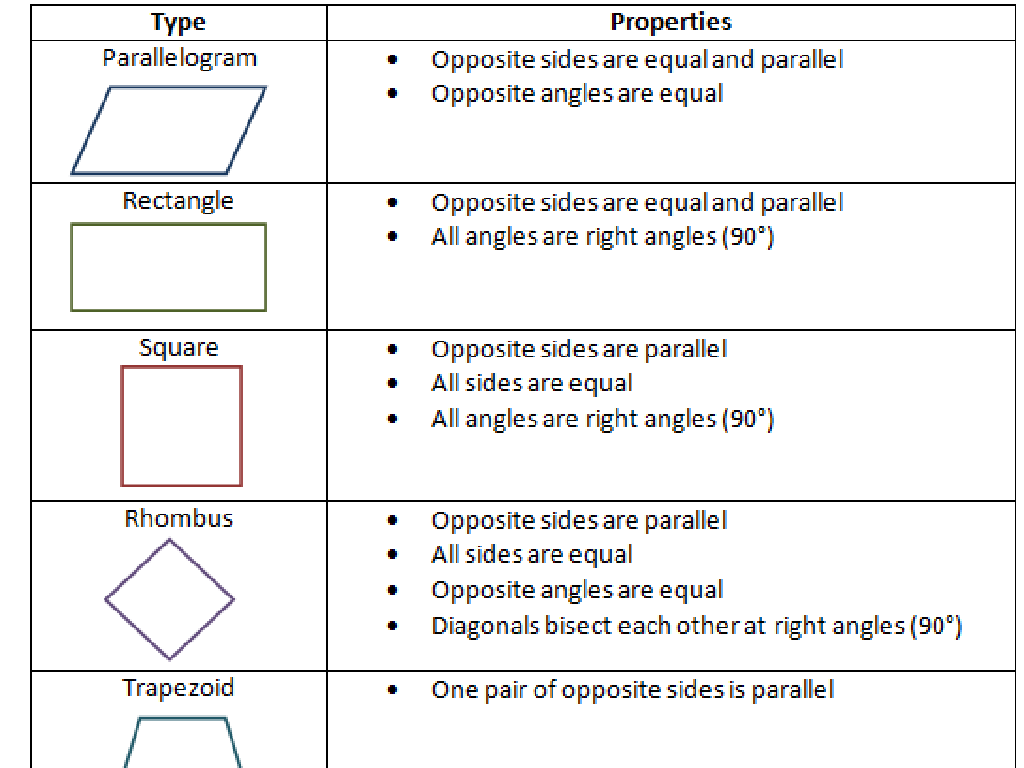Explore Air Masses
Subject: Science
Grade: Seventh grade
Topic: Weather And Climate
Please LOG IN to download the presentation. Access is available to registered users only.
View More Content
Exploring Air Masses in Weather and Climate
– Our atmosphere: Earth’s protective layer
– Weather vs. Climate: What’s the difference?
– Weather is day-to-day, climate is long-term patterns
– Air Masses: Large bodies of air
– Defined by temperature and humidity, originating over uniform regions
– Characteristics of different air masses
– For example, maritime tropical (mT) air masses are warm and moist
|
This slide introduces students to the concept of air masses within the broader topics of weather and climate. Begin by discussing the atmosphere as the protective layer surrounding Earth, which plays a crucial role in weather and climate. Clarify the difference between weather (short-term atmospheric conditions) and climate (average weather patterns over a long period). Introduce air masses as large bodies of air with uniform temperature and humidity, which form over specific regions (like oceans or continents). Explain how these air masses can affect weather patterns when they move and interact with other air masses. Provide examples of different types of air masses, such as maritime tropical or continental polar, and their characteristics. Encourage students to think about how air masses might influence the weather they experience in their own region.
Exploring Air Masses: Weather Fundamentals
– Understanding Weather
– Weather is the day-to-day state of the atmosphere.
– Differentiating Weather and Climate
– Weather is short-term, climate is the average over time.
– Influences on Weather
– Temperature, air pressure, and humidity affect weather.
– Significance of Weather Studies
– Knowing weather patterns helps in planning and safety.
|
This slide introduces the concept of weather and its distinction from climate, setting the stage for a deeper dive into air masses and their role in meteorology. Weather refers to the immediate conditions of the atmosphere, which are dynamic and change frequently. In contrast, climate is the long-term average of weather patterns in a particular region. Factors such as temperature, air pressure, humidity, and the movement of air masses influence weather conditions. Understanding these factors is crucial for predicting weather and preparing for its impacts on daily life, agriculture, and safety measures. Encourage students to think about how the weather affects their own activities and why it’s important to study these atmospheric phenomena.
Exploring Air Masses
– Define Air Masses
– Large bodies of air with uniform temperature and humidity
– Characteristics of Air Masses
– They can be cold or warm, humid or dry, depending on their source region
– Air Masses & Weather Impact
– They influence temperature, precipitation, and can cause storms
– Observing Air Masses in Action
|
Begin the lesson by defining air masses as large volumes of air that have consistent temperature and humidity, which they gain from their source regions. Explain that the characteristics of air masses, such as their temperature and moisture content, are determined by the surface over which they form, like tropical seas or polar lands. Discuss how these air masses can move and interact with other air masses, leading to changes in weather patterns, including the formation of storms when warm and cold air masses collide. Provide examples of how air masses can affect local weather, such as a cold, dry air mass bringing clear skies and cooler temperatures. Encourage students to observe the weather over a week and make notes on how it might be influenced by different air masses.
Exploring Types of Air Masses
– Tropical vs. Polar Air Masses
– Tropical air masses are warm, Polar are cold
– Maritime vs. Continental Air Masses
– Maritime air masses are moist, Continental are dry
– Global Air Mass Examples
– Ex: Maritime Tropical (mT) affects Southeast US
|
This slide introduces students to the concept of air masses and their classifications. Air masses are large bodies of air with uniform temperature and humidity characteristics. Tropical air masses originate near the equator and are typically warmer, while polar air masses form near the poles and are colder. The difference between maritime and continental air masses is their moisture content; maritime forms over water and is humid, while continental forms over land and is drier. Provide examples of air masses, such as the Maritime Tropical air mass which brings humidity and warmth to the Southeastern United States. Encourage students to think about the climate in different regions and how these air masses might influence the weather they experience.
Air Masses and Fronts: Interactions and Weather Patterns
– Interaction of different air masses
– When air masses meet, they create fronts, leading to various weather conditions.
– Characteristics of warm and cold fronts
– Warm fronts bring gradual weather changes, while cold fronts can cause abrupt weather shifts.
– Stationary fronts explained
– A stationary front occurs when two air masses are not strong enough to replace each other.
– Weather patterns caused by fronts
– Fronts can lead to precipitation, storms, or clear skies, depending on their nature.
|
This slide aims to explain the concept of air masses and the weather phenomena that occur when they interact. Students should understand that an air mass is a large body of air with uniform temperature and humidity characteristics. When these air masses meet, they form fronts, which are the leading edges of an air mass. Warm fronts typically result in light rain or drizzle followed by warmer, clearer conditions, while cold fronts can lead to thunderstorms and a rapid drop in temperature. Stationary fronts may result in prolonged periods of cloudy, wet weather. It’s crucial for students to recognize the signs of these fronts and the associated weather patterns to understand weather forecasts and climate behavior.
Observing Air Masses
– Tools used by meteorologists
– Barometers, thermometers, and satellites help study air masses.
– How to read a weather map
– Symbols and colors on maps indicate temperature and pressure.
– Identifying air masses on satellite
– Satellite imagery shows cloud patterns and movement of air masses.
– Understanding air mass characteristics
|
This slide introduces students to the tools and methods used by meteorologists to observe and study air masses, which are large bodies of air with uniform temperature and humidity. Emphasize the importance of barometers for measuring air pressure and thermometers for temperature, which are crucial in identifying different air masses. Show how to interpret the various symbols and colors on a weather map, which indicate different weather conditions. Explain how satellite images can be used to track the movement and characteristics of air masses across the Earth’s surface. Encourage students to think about how these tools contribute to weather forecasting and climate studies.
Air Masses in Action: Weather Prediction
– Case study on air mass impact
– Study how air masses influence weather patterns and events.
– Analyze real weather data
– Look at temperature, humidity, and pressure data to see air mass effects.
– Predict weather with air mass knowledge
– Use characteristics of air masses to forecast weather conditions.
– Understanding weather events
|
This slide aims to explore the practical application of air masses in understanding and predicting weather. Begin with a case study that illustrates how different air masses affect weather events, such as storms or heatwaves. Encourage students to analyze real weather data, focusing on how temperature, humidity, and pressure change with the movement of air masses. Teach them to use this knowledge to make predictions about upcoming weather, reinforcing the connection between theoretical concepts and real-world applications. Discuss the importance of air masses in meteorology and how they can lead to various weather events. This will help students grasp the significance of air masses in the broader context of weather and climate.
Class Activity: Create Your Weather Map
– Draw and label air masses on map
– Indicate different fronts
– Show where warm and cold air meet
– Predict the weather outcomes
– Use your map to forecast rain, sunshine, etc.
– Present your forecast to class
|
This activity is designed to help students apply their knowledge of air masses and weather fronts by creating their own weather maps. Provide students with a blank map and markers or colored pencils. They should draw and label the different types of air masses they’ve learned about, such as maritime tropical or continental polar. Next, they should indicate where cold and warm fronts are located and use this information to predict the kind of weather each region on the map might experience. Finally, students will present their weather forecasts to the class, explaining their reasoning. This will reinforce their understanding of how air masses and fronts affect weather and improve their public speaking skills. Possible variations of the activity could include group work for map creation or using digital tools to simulate weather patterns.
Conclusion: Air Masses and Weather Patterns
– Recap of air mass characteristics
– Remember: large bodies of air with uniform temperature and humidity
– Air masses in weather forecasting
– Air masses influence temperature, precipitation, and more
– Reflect on today’s learning
– Think about how air masses affect climate and weather
– Engage in Q&A session
|
This slide aims to summarize the key points about air masses and their impact on weather prediction. Start by reviewing the characteristics of air masses, such as their temperature, humidity, and the regions they form over. Emphasize how these large bodies of air move and interact with other air masses to create different weather conditions. Encourage students to think about the role of air masses in the context of weather forecasting and how meteorologists use this information to predict weather patterns. Conclude with a Q&A session to assess understanding and clarify any misconceptions. This interactive recap will help solidify the students’ grasp of the material covered in today’s lesson.
Homework: Historical Weather Event Analysis
– Research a historical weather event
– Explain the air masses involved
– Identify whether cold, warm, polar, or tropical air masses played a role
– Describe environmental effects
– Look at changes in the landscape, flora, and fauna
– Note the impact on people
– Consider evacuation, economic loss, and health
|
This assignment encourages students to explore the real-world implications of air masses on weather events. They should select a historical weather event, such as a hurricane, tornado, or blizzard, and research the types of air masses that were involved and how they interacted to create the event. Students should describe the event’s effects on the environment, including any notable changes to the landscape and impacts on wildlife. Additionally, they should assess the human aspect, including how the event affected communities, any evacuations that took place, economic losses, and health impacts. This will help students understand the significance of air masses in weather and climate, as well as the human-environment interaction during extreme weather events.






